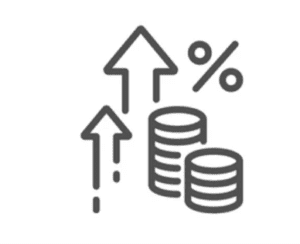Written By: Gerald O’Dwyer The PE Guru

Head up – the great depression may be here, and let me give you the facts: As a private equity (PE) investor observing the current economic climate, there are several key factors to be cautious about, especially in light of the recent developments regarding the M2 money supply and Walmart’s financial outlook.
Negative Trend in M2 Money Supply:
The M2 money supply, which includes cash and cash-like assets circulating in the U.S. economy, has been experiencing a negative growth trend. This is significant because it’s only the fifth instance since the Great Depression, with the M2 money supply down 3.17% from the prior-year period and 4.37% from its July 2022 peak as of September 2023. In June 2023, the M2 growth rate was –3.5 percent. Such a trend suggests a reduction in the overall liquidity and cash flow in the economy, which can have various implications, including reduced consumer spending and potential difficulties in securing financing or credit.
Walmart’s Economic Outlook and Consumer Behavior:
Walmart, a major retail player, has provided a cautious economic outlook for 2023. The company forecasted full-year earnings below analysts’ estimates, with expectations of $5.90 to $6.05 per share against an estimated $6.50 per share. This caution stems from concerns about tight consumer spending, which could impact profit margins. Walmart’s Chief Financial Officer noted the uncertainty in the economic outlook, with balance sheets getting thinner and savings rates dropping significantly compared to pre-pandemic levels. This scenario is further complicated by the Federal Reserve’s aggressive rate increases.
Impact of Inflation and Consumer Choices:
Walmart’s Chief Executive Officer highlighted the ongoing issue of stubborn inflation, particularly in essential items like dry groceries and products for immediate consumption. The company has noticed a consumer shift towards more food and consumables, away from general merchandise. This shift in consumer behavior, influenced by inflation, is expected to continue impacting the company’s profit margins. Key product categories like toys, electronics, home, and apparel are currently underperforming, indicating a change in consumer spending priorities.

Given these insights, as a PE investor, you should be wary of:

Reduced Consumer Spending:
The tightening of consumer wallets can lead to decreased demand for non-essential goods and services, affecting businesses reliant on discretionary spending.
- Credit and Liquidity Concerns: The contraction in M2 money supply may indicate tighter credit conditions, impacting businesses’ ability to secure loans or finance operations efficiently.
- Inflation and Supply Chain Challenges: Persistent inflation can squeeze profit margins, and businesses may struggle with the rising costs of goods and supply chain disruptions.
- Interest Rate Hikes: The Federal Reserve’s actions to counter inflation by raising interest rates could further dampen consumer spending and economic growth.
It’s essential to closely monitor these trends and adapt your investment strategies accordingly, considering the potential for a slower economic growth environment and the changing consumer behavior patterns.